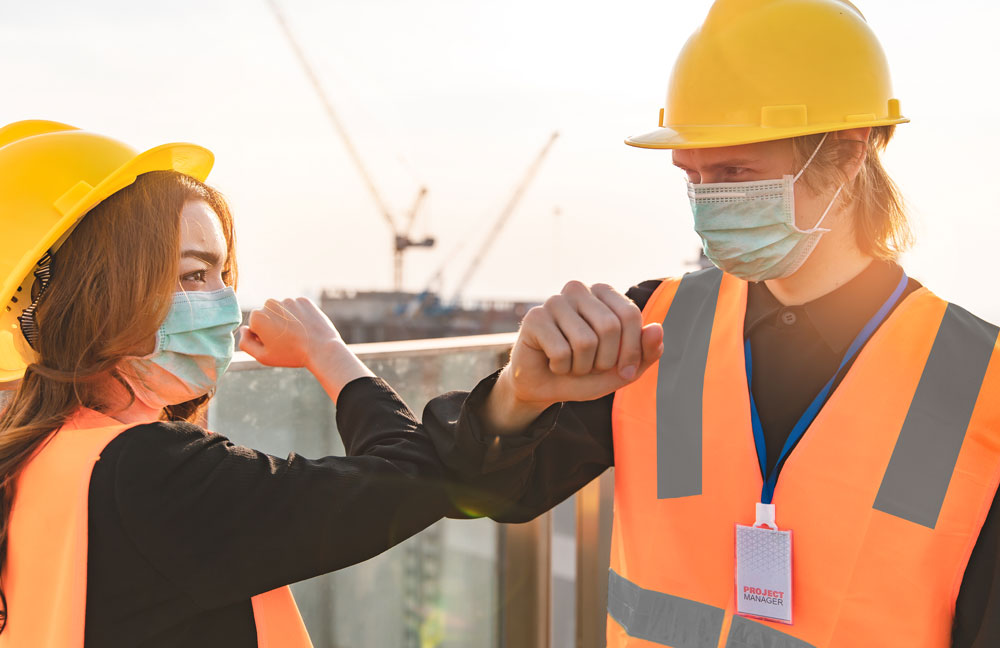Despite the real safety advantages, motivating employees to wear PPE can be frustrating, especially when there’s resistance. Overcoming that kind of pushback may take more than just asking. However, with a little more show and a bit less tell, you may find compliance is easier than you think.
We’ve gathered some great advice from articles, websites, and podcasts, each from a respected safety expert, to help you put a plan in place. Each expert offers a slightly different perspective, but all agree:
- Safety culture starts from the top
- Safety is everyone’s responsibility
- Safety policies should be clear
- Training should build safety awareness
- The right PPE for the job is essential
Below are some of their suggestions and links to their resources to help you create safer work practices and overcome any resistance your workers may have to using PPE.
1. Safety culture starts from the top
Chris Tatge of Dynamic Construction in SBC magazine (Structural Building Components Association) says that the best way to get a crew to use their PPE is to develop and maintain a culture of safety.
His philosophy starts with a top-down approach. If workers see the manager wearing the right gear in the right way, they will follow by example. It’s a practice that shows leadership cares about everyone going home safe at the end of the day and one that builds an effective safety culture.

2. Safety is everyone’s responsibility
According to E. Scott Geller, Director of the Center for Applied Behavior Systems at Virginia Tech, giving workers the responsibility of caring for each other’s safety empowers them.
In a recent article on the Coronavirus pandemic, he explains his theory using the acronym COACH: care, observe, analyze, communicate and help. Though the article was written specifically for healthcare workers, it’s a popular practice he is asked to present in many other industries too.
“Because people tend to naturally get in a flow of dealing with immediate issues, we often fail to be proactive and prepare for the possibility of something like a pandemic. This is the same issue seen in keeping workers safe in various other industries: efficient production too often wins over time-consuming safety.”- E. Scott Geller

3. Safety policies should be clear
Employees should not only practice safety policies, but they should understand them too. That’s what Jake Woolfenden, Owner of Summit Safety Group, said in a recent episode of The Safety Consultant Podcast.
It sounds like obvious advice. But, he points out that if policies aren’t strictly stated, showing the connection to a worker’s day-to-day environment, then those policies are likely not to get adopted.
“Not only should the policy be written, but it should also be actively lived out each day. That includes consistent, proactive safety audits, site inspections, hazard identification, and regular interactions to ensure employees know and live the policy.” – Jake Woolfenden
4. Training should build safety awareness
Safety training should be a process, not just a one-time session, or so says Brye Sargent, Safety Professional and podcast host. In the episode “8 Ways to Increase Safety Awareness,” she talks about training as part of a way to build your overall safety policy.
Within the show, she explains how big chunks of training, including safe practices, aren’t likely to be entirely absorbed by an employee.
Instead, she suggests that you make safety training part of the ongoing process of learning the new skill. And, most importantly, ensure the message along the way tells them why it matters to them and not just the company.

5. The right PPE for the job is essential
Getting your workers to wear PPE goes beyond culture. It relies on what you actually provide them. But, how do you know what PPE is required and what type will protect them best?
The National Institute of Occupational Safety and Health (NIOSH) provides a PPE database based on industry expertise that can help. It’s a resource that serves as a comprehensive research tool for Federal regulations and consensus standards of PPE.
NIOSH’s commitment to the safety of PPE doesn’t stop there. In a recent press release, John Howard, NIOSH Director, announced an upgrade to its National Personal Protective Technology Laboratory (NPPTL). NPPTL supports U.S. workers who rely on protective gear to keep them safe from on-the-job hazards.
“The important role of PPE in providing potentially lifesaving protection to workers has never been clearer.” – John Howard
Reduce workplace injuries
When protecting workers is a priority, everyone wins. Wearing the PPE that’s meant for the job is an essential part of that. With straightforward messaging and a sincere culture that encourages safety and compliance, your workers are more likely to follow established policies. It’s the best way to look out for each other and reduce workplace injuries.
At Liberty Glove and Safety, we want to help. We provide the high-quality, branded PPE clothing and safety equipment you need. For more information on our line of personal protective equipment, get in touch today!


